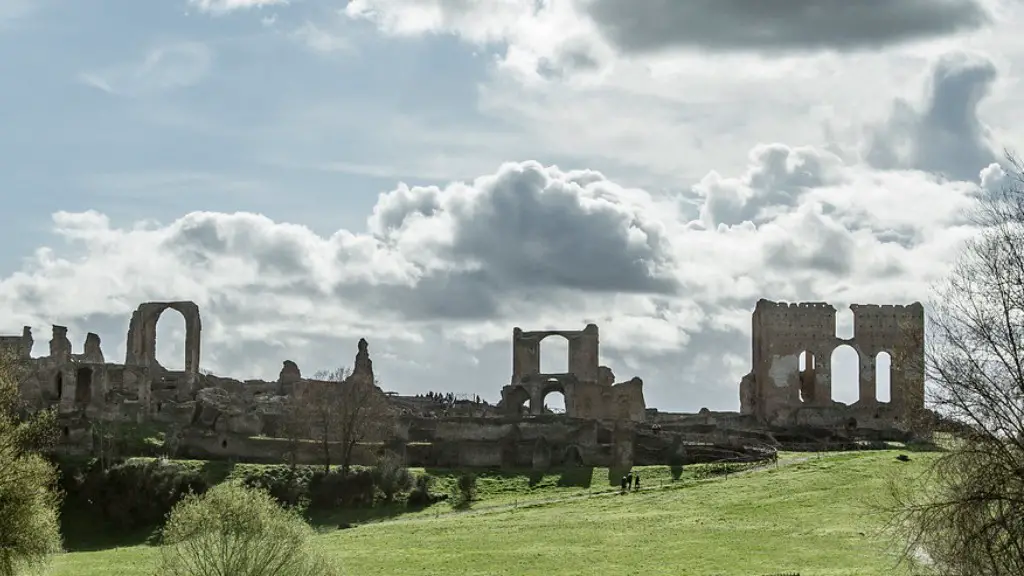Background Information
The Ancient Romans spoke Latin, an Italic language spoken in the area around Rome known as Latium and the associated settlement of the other Latins, today’s Lazio region. Latin was part of the Italic language family, of which a number of languages, such as Oscan, Faliscan and Umbrian, were spoken by small tribes in central-southern Italy before the founding of Rome in the 8th century BC. Latin was heavily influenced by the Etruscan language from the 9th to the 1st centuries BC, and was used in official contexts such as liturgy, literature and education, progressively expanding to become a lingua franca.
Origins and Development of the Latin Language
The Latin language evolved slowly over the centuries and thus, the Romans of the 1st century BC spoke and wrote with a slightly different “linguistic accent” than the Romans of the 2nd and 3rd century AD. This is known as the evolution of the Latin language, which is divided into different phases or dialects, often referred to as Classical Latin and Late or Vulgar Latin. Classical Latin was used by high literature and official texts, like religious texts and laws.
The evolution of Latin can be divided into three distinct phases: Old Latin (800-200 BC), Classical Latin (200 BC-200 AD) and Vulgar Latin (200-700 AD). Old Latin is assumed to be the language spoken by the Latins of ancient Latium and the first written records date from the 3rd century BC. In the 1st century BC, the Praetor Urbanus imposed an official form of Latin for public use, which became known as Classical Latin. This new form of Latin eventually spread throughout the Roman Empire and it was the language of educated people until the fall of the Western Roman Empire in 476 AD.
Vulgar Latin and the Origin of Romance Languages
Vulgar Latin, or the everyday language of the people, is the form of Latin spoken by the lower classes of society, which was not taught in schools or used in official documents. This form of Latin was heavily influenced by the local languages and dialects of the regions, leading to the emergence of Romance languages. Such languages include Spanish, French, Italian, Portuguese, Romanian, Sardinian and Catalan. Consequently, through language evolution, Vulgar Latin has given rise to many of the Romance languages spoken today.
Modern Latin
Modern Latin is the form of Latin used in the early Middle Ages (5th to 8th centuries) and was mainly used in churches. This form of Latin, heavily influenced by the Romance languages, was known as Medieval Latin and was gradually replaced by the modern Romance languages. In the 16th century, Latin became popular among scholars and was widely used in scientific, philosophical and political texts, but its influence diminished in the 17th and 18th centuries.
Today, Latin is still used in some rituals and ceremonies, esteemed for its aesthetic beauty, for instance in American and British universities during graduation ceremonies. Latin is also studied and read by many language enthusiasts and is seen as an important source for the English language.
Latin in Specialised Areas
Latin is still widely used in specialised areas such as law, medicine, music, botany, zoology, mathematics and astronomy. This is because Latin is seen as an international language since it has been used for centuries and many scientific terms and names are derived from Latin. For example, in medicine, Latin is used extensively as most medical terms are derived from Latin or Greek root words.
Preservation of Latin in Literature and Art
Latin has been used extensively in literature and art, and is often used to express emotion and beauty. Latin literature includes pieces by authors such as Virgil, Catullus and Cicero, who used the language to explore the political and social aspects of Rome. Latin has also been used extensively in art, such as in mosaics, frescoes, paintings and sculptures both in Rome and abroad.
Latin in Education
Latin was the language of education during the Middle Ages. It was mandatory to study Latin in most schools and universities, from the 8th to the early 19th century. Latin was used since it was the language of the Roman Empire, which was viewed as the perfect model for education, culture and history. It was also seen as a way to develop analytical abilities and intellectual acumen.
Today, Latin is mostly studied as part of a wider history curriculum and is not widespread in school education, although it is still used in some universities. Additionally, many modern words and phrases, such as “annus horribilis” (horrible year) and “ad nauseam” (to nauseating extremes), are derived from Latin.
Current Use and Popularity of Latin
Latin is no longer an official language, and was completely supplanted by the Romance languages during the Middle Ages. Although it is no longer popular and widespread, Latin is still used by certain religious institutions, such as the Roman Catholic Church, and the language is also studied by fans of the classical era. Additionally, the Latin language still influences other languages, both in terms of vocabulary and grammar.
Some experts consider Latin as a ‘dead’ language because current speakers of Latin have no significant use of the language beyond what was necessary for their studies. However, due to its historical and cultural relevance, Latin is still studied by language enthusiasts, with many websites and books dedicated to reviving the language and education methods.
Conclusion
The Ancient Romans spoke Latin, a language which evolved over centuries and whose modern form is still studied and appreciated by scholars around the world. Latin has undergone many changes and dialects, influencing other languages and becoming itself the source of many modern words and phrases. Despite not being a widespread language anymore, Latin continues to be used in specialised areas and its cultural relevance remains strong.


